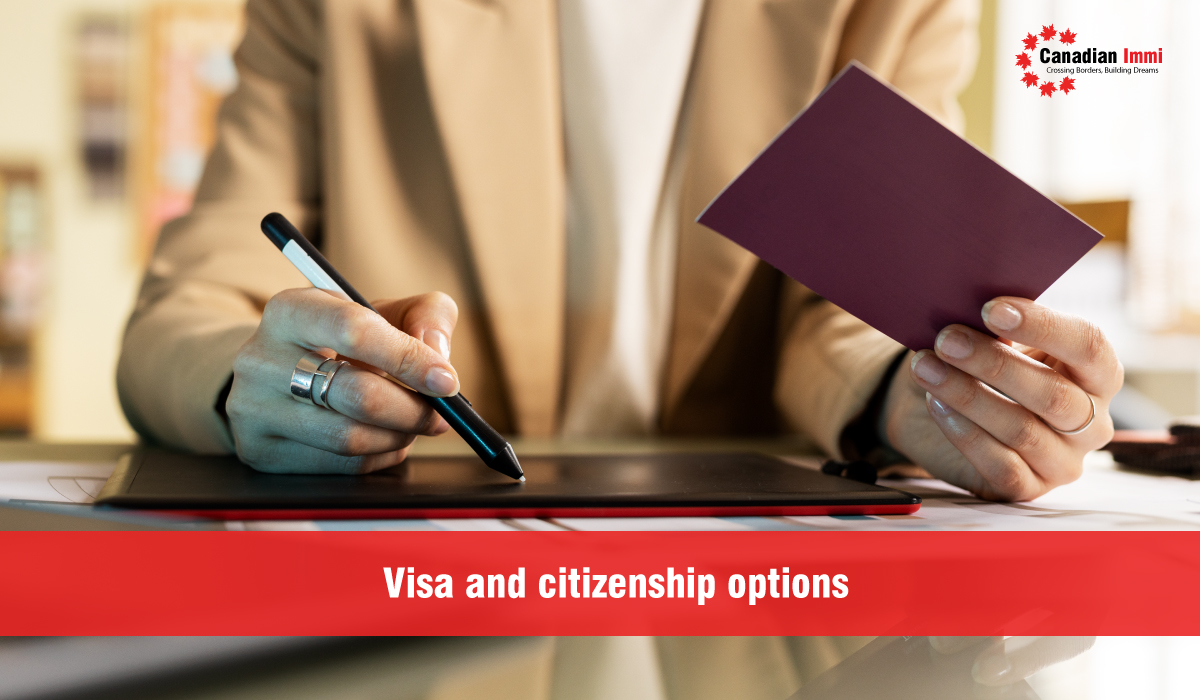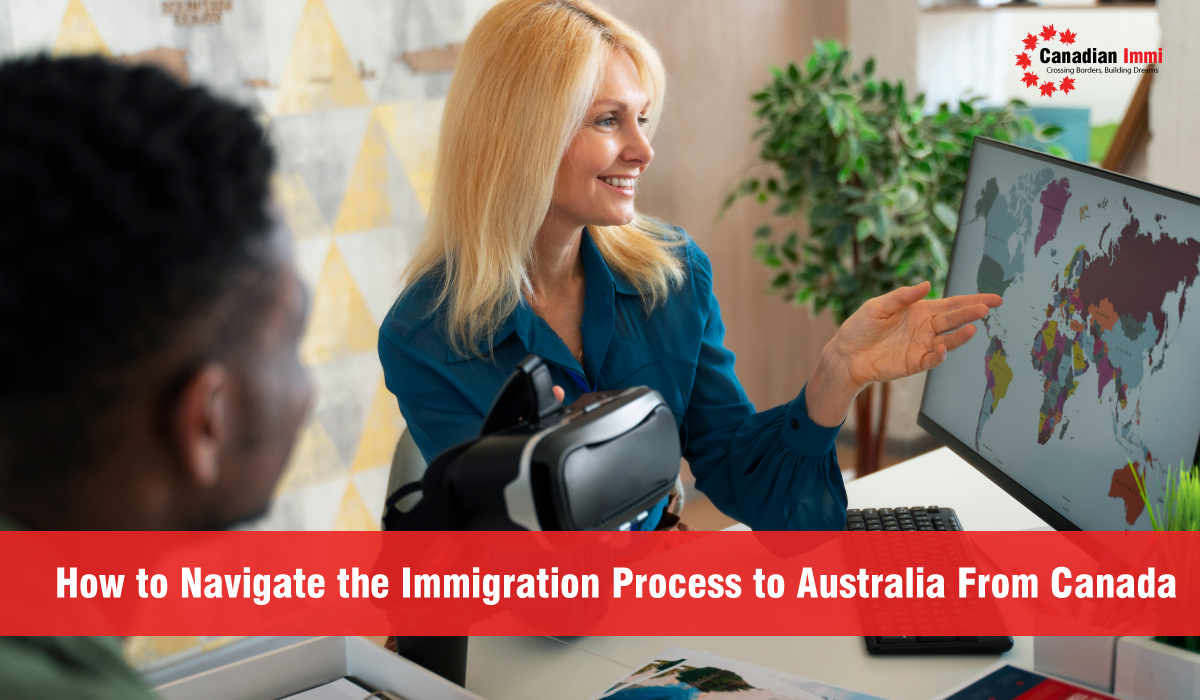Those considering moving to Australia for work, a family relationship or to live a more diverse lifestyle have several options. With the right information and professional assistance, the process can be manageable for Canadian citizens.
The most popular route for permanent residency in Australia is through a skilled migration program. However, it’s important to assess your eligibility and understand the requirements before making a decision.
Visa and citizenship options
There are many different options for Australians to become permanent residents in Canada, from skilled migration to family sponsorship. The process can be complicated and requires extensive preparation, so it’s important to make sure you understand your options and how to navigate them. To begin, determine your eligibility by completing an online assessment. Then, select the visa that best suits your needs. Once you have selected your visa, it is important to ensure that you meet all of the requirements.
One of the most common ways for Australians to immigrate to Canada is through the skilled worker category, which includes occupations such as engineers, nurses, and IT professionals. This pathway can be achieved through the Express Entry program, the Federal Skilled Worker Program, or the Provincial Nominee Programs. Additionally, Canadians can apply for this category if they have a job offer from a Canadian employer or if they are sponsored by a family member who is already a resident of Canada.
Another option is for Canadians to enter Australia under the Working Holiday Program, which is designed to allow young people between the ages of 18 and 35 to travel and live in the country while working for up to a year. This can be a great way to experience the Australian lifestyle and decide whether it is a good fit for you before making a full commitment.
Other options include applying for a business visa, which can be beneficial to Canadians looking to start or expand a business in the country. This option can be obtained by submitting an expression of interest (EOI), having a positive skills assessment, and receiving an invitation to apply from the Department of Immigration. Additionally, Canadians can enter the country on an investor visa, which allows them to open businesses and invest in the economy.
Canadians can also become citizens through the process of naturalization, which is done by filling out an application and meeting the requirements, including passing a citizenship test and attending an interview. This can be a long and difficult process, so it is best to seek the help of an experienced immigration lawyer to ensure you’re on the right track.

Skilled migration and work visas
There are many visa options available to Australians wishing to move to Canada, either on a permanent or temporary basis. The most common work visa option for Australians wishing to migrate to Canada is the IEC working holiday program, which allows young people between the ages of 18 and 35 to spend up to one year travelling and undertaking temporary paid employment. This category of visa comes with an open work permit, meaning you can do any job that suits your skill set.
Skilled migration is another visa option that allows skilled workers to settle permanently in Australia. This is a points-based system that evaluates your education, qualifications, job skills and language ability against the Australian Skilled Occupation List to determine your eligibility.
You can apply to immigrate through this process using the Express Entry program, Federal Skilled Worker Program, Canadian Experience Class or Provincial Nominee programs. The best option for you will depend on your skill set and how much money you have to invest in the country.
In addition to skilled migration, you can also move to Canada on an employer-sponsored visa, which is normally granted to employees of multinational corporations that have a presence in Australia. In order to be eligible for this type of visa you need to be nominated by an Australian company and meet certain health and character requirements.
Another visa option is to apply through the International Co-op program, which is a temporary work visa for students at Australian post-secondary institutions who are doing an internship in Canada. You can only participate in IEC once, and it must be in either the Working Holiday or Young Professional categories (unless you are doing your second participating under the International Co-op category). You will need to complete a medical exam and provide biometric data in order to obtain this visa. This is typically done in your home country before you travel to Canada, and you can submit your application at a VFS Global visa application centre. Once approved you will receive a Port of Entry (POE) letter that allows you to enter the country and begin working.
Student visas
Australia is one of the most popular countries for international students, with its high quality educational institutions, global reputation and emphasis on research. For those seeking a change of scenery or career, it is a wonderful place to live, with its varied landscape, thriving economy and high standard of living. There are a number of pathways for individuals looking to move to Australia from Canada, including skilled migration, family-based immigration and temporary work visas.
To obtain a student visa, it is important that students have been accepted into an Australian university. Once this is done, a confirmation of enrollment must be provided to the Department of Immigration as part of the student visa application process. It is also necessary to provide proof of sufficient funds to cover tuition fees, living costs and travel expenses. Additionally, students must obtain OSHC (Overseas Student Health Cover), which is approved by the Department of Immigration, and maintain this coverage throughout their stay in Australia.
Depending on the type of visa, students may have to provide biometrics during their visa application process. This includes fingerprinting and photographs that are used for security purposes. It is also worth noting that there are some restrictions on working while studying in Australia, so if this is something you plan to do, be sure to consider the implications.
Students will also need to provide evidence of English proficiency at a minimum level. This can be achieved through taking an approved English language test, such as IELTS or TOEFL. In addition, students will need to sign a ‘Life in Australia’ booklet and confirm that they will comply with all Australian laws and standards.
Individuals considering moving to Australia should consult with an experienced migration consultancy, such as Flyworld Migration. They can help assess their eligibility, gather the appropriate documents and navigate the complex Canadian-Australian immigration process. Contact them today to get started.
Parent visas
The Australian government offers a number of visa options to bring parents and other relatives to live permanently in the country. Each of these visas has its own criteria, and many of them are subject to a certain amount of time spent waiting in the queue before they can be awarded. It’s important to speak with a registered migration agent or immigration lawyer to determine which Australian parent visa might be best suited to your family’s circumstances, and to plan accordingly.
The Contributory Parent visa (subclass 173) is the most common option, and provides a pathway to permanent residency. To be eligible for this visa, you must have a child who is either an Australian citizen or a permanent resident. You must also pass the ‘Balance of Family Test’, meaning that more than half of your children and step-children reside in Australia as citizens or permanent residents, or that you have a higher percentage of Australian-born children than any other single country.
In addition, there is the Sponsored Temporary Parent Visa (subclass 870), which allows families to reunite in Australia for up to five years. As with the Contributory and Non-Contributory Parent Visas, it is a temporary visa, and applicants must meet health and sponsorship requirements, including undergoing a medical examination and chest X-ray, and providing an assurance of support (AoS).
There are also other types of permanent and long-stay parent visas available, each catering to a specific set of eligibility criteria. For example, the Aged Parent visa is designed for people who are of retirement age and would like to move to Australia permanently. The visa is based on an AoS, and applicants must have enough income to support themselves without having to rely on social security payments.
As a general rule, all Australian visas are subject to processing times and cap limits, and there is no guarantee that you will be successful in your application. However, with careful planning and the help of an experienced Australian migration agent, it’s possible to achieve your goals. If you are interested in bringing your family to Australia, contact us today to start the process.


